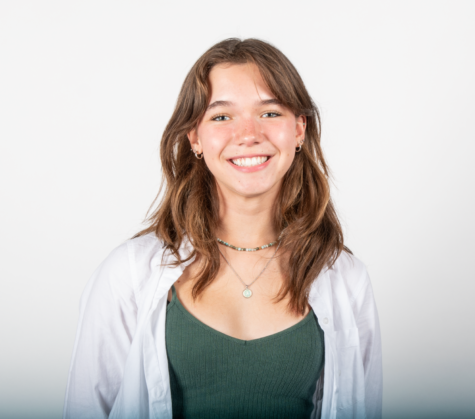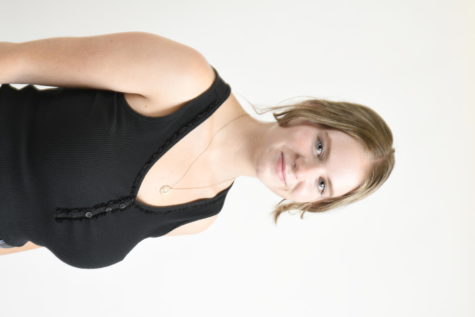Breaking down the system: Racism in education
Autrey, Brown and Moberg discuss being Black in a predominantly White school
As the only Black teacher on campus, science teacher Gillian Moberg has had to deal with racist remarks and actions made against her from students.
Before the current administration, about four years ago, a student decided to draw swastikas on Moberg’s desk, and she was able to find out which of her students it was.
“He claimed that ‘Swastikas just mean brotherhood, and it doesn’t mean what you probably think it means,’” Moberg said. “So I then tried to explain to him that that’s not what it has meant in a very long time, and although that might be the symbolism for them in ancient cultures, that’s definitely not what it appears to mean and the sentiment it portrays in this day and age at all.”
After their conversation, the student ended up “agreeing” with the points Moberg was making, and never drew any hateful symbols on her desk again.
“I just decided to look at the situation as a teachable moment,” Moberg said. “I try to look at it from a perspective of feeling happy that I was able to explain to him how offensive and hurtful drawing those symbols is.”
Moberg also has the n-word carved into one of her desks by a student from several years ago that she has still been unable to properly paint over.
“I think over the last few years we’ve all had a chance to reflect on racial issues in not only America, but just around the globe in general,” Moberg said. “And with these students that have decided to make these hurtful actions I’m not sure they’re not necessarily bad kids, but more so just have a narrow view of the beliefs they’ve been taught to have.”
Outside of the classroom setting, Moberg also continues to “feel like she stands out,” living in Hermosa Beach, a South Bay city with 1% of the population being Black, according to suburbanstats.org.
“As we talked about diversity in species in my environmental science class last year I did bring up the fact that I am the only Black person on my block,” Moberg said. “Although it does give my street some diversity, it’s not exactly diversity.”
However, Moberg has now lived in the South Bay for several years now, and although it can sometimes feel “uncomfortable,” she sees it as just a “part of her life nowadays.”
“Being one of the only Black staff members at Redondo, and the only Black person on my street is not a negative thing,” Moberg said. “If anything it just grants me an opportunity to realize and acknowledge my otherness, which doesn’t inherently make me lesser or greater than, it just makes me different.”
Moberg hopes that we will be able to find a way to integrate more racial justice discussions into our classrooms and have its “importance more well known” within our student body.
“There’s a lot of self-educating that I’m doing to try to make peace with where we are now in regards to racial justice,” Moberg said. “I think it’s good that we are grappling with these types of issues, and I do hope that more and more people will make changes in their own personal sphere that will lead us to a more compassionate society.”
Senior Amber Autrey also faces many similar feelings of isolation being one of the few Black AP students here on campus.
“It’s like an internal struggle that I’m always aware of,” Autrey said. “Every class I walk into, it’s always, ‘Let me see how many Black people there are.’ Even if we aren’t having a discussion about race or discrimination, just knowing that there’s somebody in the classroom that looks like me makes me feel more connected and supported.”
Growing up, Autrey felt like she had to “work twice as hard to not be seen as lazy,” and even had many of her teachers in elementary school try to change her path toward a more athletic route instead of directing her towards higher level classes.
“I wasn’t recommended for any honors or high level classes going into middle school. It took my mom going in to meet principals to fight to let me in, but it worked because I’m pretty successful in my APs today,” Autrey said. “Oftentimes, Black students aren’t pushed into these higher classes by their teachers when they definitely should be.”
Autrey has also witnessed situations where students and teachers will “stereotype Black people’s role in the classroom,” such as when Autrey’s sister, who is in the STEM field, was told by her classmates that she didn’t belong in the class because “she’d been given an affirmative action, as if it was a handout.”
“I think that in order to really combat racism in the classroom, especially in the future, we need to put it in the curriculum, especially in American history. There’s so much more to it than just the stories of White Americans,” Autrey said. “The same goes for English class. I always wondered, why do we have to have a separate class for multicultural studies? I think that it would be beneficial if we included more cultures into the regular class.”
With more diversity in the content of the information being learned in CP courses, not just special ones that can be taken as an alternative, Autrey believes “students will learn about a larger variety of cultures that have influenced society today.”
“I usually feel really uncomfortable bringing racism up because I don’t want to be complaining or whining. It really just takes a teacher to reach out to me because I struggle starting the conversation myself,” Autrey said.
Autrey also describes how when someone is called racist, they “immediately want to defend themselves by saying, ‘No, I’m not! I love Black people,’” without “reflecting” on the racist comment they might have just made.
“I think it would be good to talk more about being less defensive of the things we all say or do,” Autrey said. “It’s good to just check yourself and learn, and if we don’t have these uncomfortable conversations, nothing will ever change.”
While most know him as the assistant principal here at RUHS, Marvin Brown is also the district leader, alongside Dr. Keller, for the RBEF movement on race and equity, and one of the only Black staff members here on campus.
The decision for this movement began after the death of George Floyd, when riots and protesting had broken out around the world demanding justice for George Floyd.
“I told all of our teachers at that time to reach out to your Black students and ask them how they’re doing. Let them know that you care and let them know where you stand with race, racial equity and racial injustice. Because, as a Black student, when I put myself in a high schooler’s shoes, I want to know where my teacher stands, I want to know where all people, White people specifically, stand on racism. When you’re Black that’s the first thing you think when you see a White person, especially when you have a teacher who’s White. You wonder where they stand on this,” Brown said.
Brown and Keller were both intent on making sure actions were taken at RUHS to ensure that all forms of racism would be put to a stop. To do this, they worked with a team to create four goals to be reached.
Goal number one was to develop a racial equity committee comprised of students, parents, guardians, staff, and community members, Brown explains.
“We reached out to the community and have over 155 applicants right now to be a part of this committee. We want students to be a part of that committee, ideally having one representative from each grade level, and also having diversity as well,” Brown said.
Brown especially believes that diversity is a “key factor” to this committee, “allowing all voices to be heard so that we can move forward with equal representation and understanding of what needs to be done to move forward as a community.”
Goal number two is to facilitate anti-racist training for all RBUSD employees.
“The goal is aimed at teaching people in groups to recognize the ways that White supremacy and implicit bias are part of their behavior, and how they shape nearly every institution in the United States,” Brown said.
By educating teachers on racism and training them to understand that certain behaviors are not acceptable, Brown believes “they will have a better understanding of how to deal with it in the classroom and how to ensure that they are not part of the problem, but the solution.”
“Goal number three is to create a mentorship program where teachers and administration train and develop Black, indigenous, and people of color to become educators,” Brown said. “We want to create teachers from our student population, specifically targeting students of color.”
Brown wants to emphasize the idea of knowledge being power, and when students are given the power to know their rights and help educate others, “change is possible.”
“Goal number four is to recruit and retain more employees who represent our diverse community,” Brown said. “It’s known that our school district is very diverse and we want our staff to look similar to what our student population looks like, so we are currently working on that becoming a reality.”
During the time of the protests and riots back in May, Brown, along with Dr. Keller and Dr. Anthony Toronto, met with some past and present RUHS students who had started an Instagram account, allowing students to share their own experiences with racism at Redondo.
“The ‘Dear RBUSD’ account just basically gave some of our students—former students and current students—an opportunity to tell us, the district, what type of racism they experienced while on campus,” Brown said. “We met with them because we wanted to hear what students had said, but more importantly we wanted them to know that we were going to fix this issue.”
The statement “Black Lives Matter” should bring to mind “racial equity, social justice and racial justice, not Republican or Democrat,” Brown explains.
“This isn’t about politics,” Brown said. “This is about mistreatment and it’s about being on the right side of this movement. If you care about human beings, you should care when people get mistreated and you should care passionately about racism.”

Notable Life Achievements: Awesome blueberry muffin maker. Can read a Sally Rooney book without throwing up. Has seen Before Sunrise upwards of 10 times. Lighting designed High School Musical 2 in less...
Hi! My name is Mia. I'm a senior and this is my fourth year as a High Tide staff member. Some of my favorite things include reading, writing, and hanging out with my friends.



